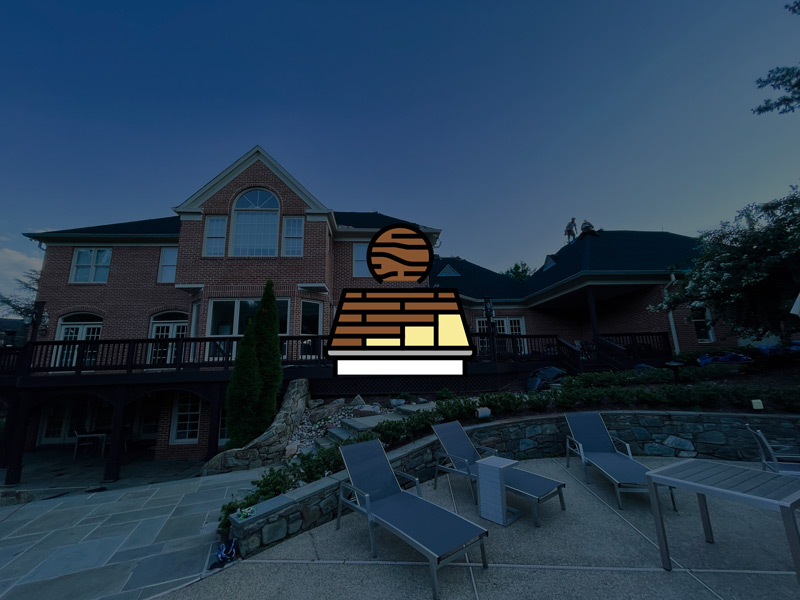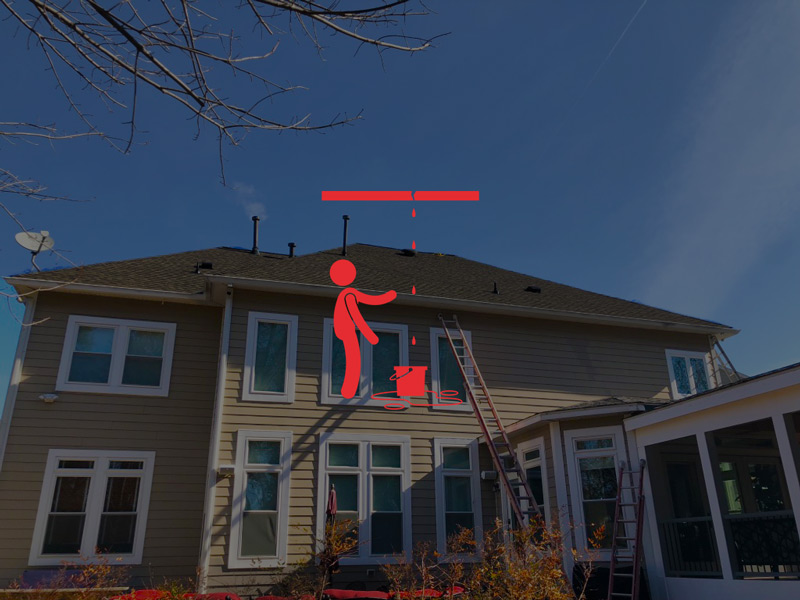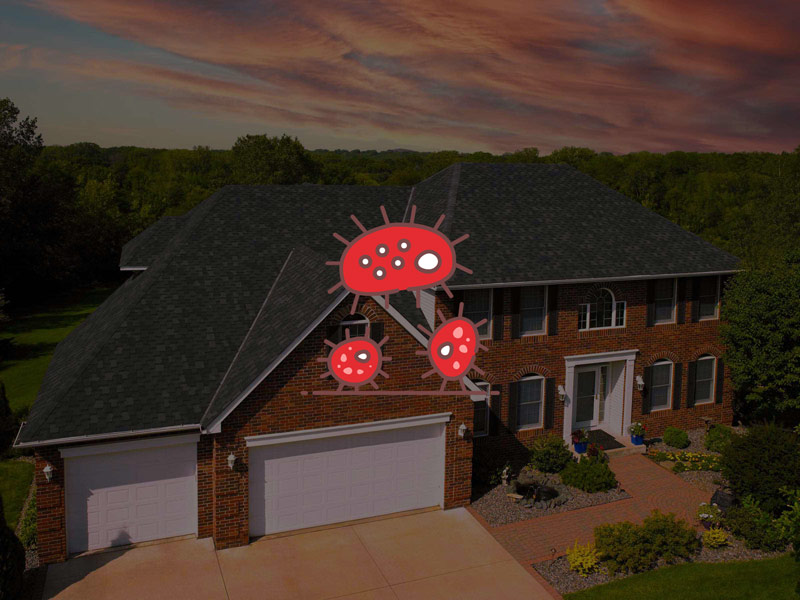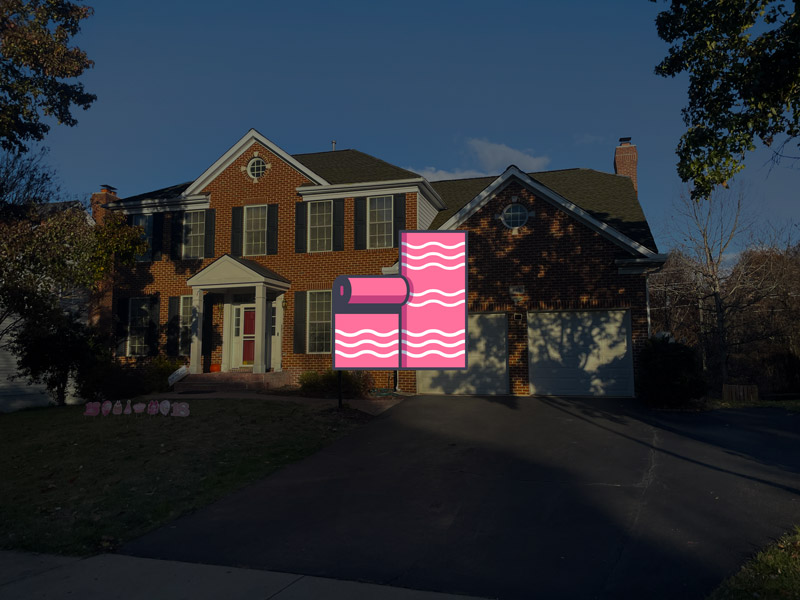Early Signs of Water Damage on Ceiling: Detection and Prevention
Recognizing the early signs of water damage is crucial to avoiding more extensive issues down the line.Water damage on ceilings can have far-reaching consequences if left unnoticed and untreated.Timely detection can save homeowners from costly repairs and structural complications. As an adept roofing contractor with years of experience, I’m here to provide you with valuable insights on identifying these telltale signs.

Discoloration and Stains
Discoloration and stains on the ceiling serve as crucial initial signals of potential water damage. These conspicuous marks are often the first indicators that something isn’t right overhead. The early signs of water damage on the ceiling, such as discolored patches, can manifest in various shades and patterns, including hues like yellow, brown, or even darker spots.
Understanding the Visual Clues
These telltale signs are like nature’s way of alerting you to a hidden issue. Stains, which can be as subtle as faint discolorations or as bold as distinct patches, catch the eye for a reason. They hint at the presence of excess moisture or leaks above, often indicating an ongoing problem that requires attention.
Colors Tell a Story
The color of the stain can also provide insights into the severity and duration of the water damage. Lighter stains might suggest a recent issue, while deeper shades could imply longstanding leakage. This color variation is due to the interaction between the moisture and the ceiling material, which can help identify the potential extent of the problem.
Surprising Stain Locations
It’s worth noting that the location of the stain isn’t always directly beneath the source of the water. Water has a sneaky way of traveling along surfaces, defying gravity and sometimes appearing quite distant from its origin. Thus, the presence of a stain might indicate that the water’s entry point is not immediately adjacent.

Deterioration of Paint and Texture
Water damage on ceilings can lead to notable changes in both the appearance and feel of the affected area. As early signs of water damage on the ceiling begin to emerge, you might notice that the paint undergoes distinct alterations. Water infiltration can cause the paint to bubble, crack, or even peel off entirely, revealing the substrate underneath.
The Transformation of Texture
Beyond the visual changes, water exposure can also impact the texture of your ceiling. What was once smooth and uniform may become uneven and irregular due to moisture-related damage. Flaking, peeling, or a rough surface texture can indicate that water has permeated the ceiling materials, leading to a change in its structure.
Unearthing Hidden Indications
When inspecting for water damage, it’s paramount to cast a thorough gaze across the entire ceiling. Pay close attention not only to the central area but also to the corners and edges. Water doesn’t discriminate; it can infiltrate even the least expected spaces. By meticulously surveying the complete surface, you can uncover subtle changes in paint and texture that could signify early-stage damage.
A Preventive Approach
Understanding the evolution of paint and texture changes due to water exposure empowers you to take proactive measures. By identifying these signs early on, you can intervene before the damage progresses further. Timely repairs can prevent the need for extensive restoration and ensure the aesthetic and structural integrity of your ceiling.

Sagging or Bulging
Prolonged exposure to moisture can trigger a series of adverse effects on your ceiling. One of the most conspicuous indications is the sagging or bulging of ceiling materials. As early signs of water damage on the ceiling become evident, it’s essential to recognize these physical transformations and understand their implications.
The Impact of Moisture
Ceiling materials are typically designed to be sturdy and resilient. However, when exposed to persistent moisture, such as from leaks or condensation, they can gradually weaken. This weakening process weakens their structural integrity, leading to noticeable sagging or bulging in certain areas.
The Telltale Feel
When examining your ceiling, run your hand gently over the surface. Areas that have been compromised by water damage might feel different from the rest. They could feel soft, spongy, or even damp to the touch. These subtle tactile changes can serve as a clear indicator that moisture has penetrated the ceiling materials, causing them to lose their strength.
Urgent Action Required
Recognizing sagging or bulging in your ceiling should trigger an immediate response. These changes are not merely cosmetic; they can escalate into a more severe problem. Ignoring such signs might lead to a potential collapse, posing a risk to occupants and property alike. To avoid hazardous outcomes, it’s imperative to involve professionals promptly upon identifying these issues.

Musty Odors and Mold Growth
While some early signs of water damage on the ceiling might be visible, others are more elusive yet equally crucial to detect. Hidden water damage can give rise to a host of issues, including the growth of mold and mildew. Recognizing the presence of mold through its distinct musty odors is a pivotal aspect of identifying potential water-related problems.
The Unseen Consequences
Water damage often goes beyond what meets the eye. When moisture infiltrates concealed spaces, it provides the perfect breeding ground for mold and mildew. These microscopic organisms thrive in damp environments, and their growth can be indicative of ongoing water issues within your ceiling’s structure.
Musty Odors: A Clear Indicator
Mold and mildew growth is often accompanied by unmistakable musty odors. These scents, while unpleasant, serve as potent early warnings of underlying water damage. If you notice such odors around your ceiling, it’s a strong sign that moisture has infiltrated the area, potentially causing deterioration and structural concerns.
Safeguarding Your Space
It’s important to be able to distinguish musty odors from other smells. While cooking or pets might contribute to various scents in your home, musty odors have a distinct dampness to them. Additionally, the odor might become more pronounced in humid conditions or after rainfall. If you suspect the presence of these odors, it’s recommended to further investigate the source and address it promptly.

Peeling Wallpaper or Peeling Tape
In the realm of early signs of water damage on the ceiling, subtlety often holds the key to early detection. Excess moisture, a persistent adversary, can quietly compromise the adhesives that hold up your ceiling’s aesthetics. When wallpaper or tape starts to peel away from the ceiling, it’s a discreet yet significant indicator of water-related concerns.
Unraveling the Effects of Moisture
Adhesives that secure wallpaper or tape to your ceiling rely on a stable environment. However, excess moisture can undermine their effectiveness, causing them to lose their grip over time. When these adhesives weaken, peeling and detachment occur, revealing an underlying issue that warrants your attention.
A Glimpse Beneath the Surface
Peeling areas not only disrupt the visual harmony but also unveil the substrate beneath. This layer might exhibit signs of discoloration or dampness, both indicative of moisture infiltration. What may appear as minor peeling could, in fact, hint at a more extensive underlying problem that requires immediate investigation.
The Power of Thorough Examination
While minor instances of peeling might be tempting to overlook, it’s imperative to treat them as early red flags. Investigating and addressing these signs promptly can help prevent potential escalation. Don’t underestimate the impact of seemingly minor changes; they could be pointing towards a larger water damage issue that demands attention.

Changes in Ceiling Structure
Water’s insidious effects extend beyond mere aesthetics; they can impact the very structure of your ceiling. Understanding how early signs of water damage on the ceiling can affect its integrity is pivotal for preserving the overall safety and stability of your living space.
A Weakening Foundation
The infiltration of water can gradually erode the strength of the ceiling’s materials. Over time, this weakening might cause certain areas to feel softer or less robust than others. These changes in the structural makeup are indicative of the damage that water can silently inflict.
Visible Indicators of Trouble
In extreme instances, the consequences of water damage become visually apparent. Visible cracks might emerge on the ceiling’s surface, serving as unmistakable signs of structural stress. Additionally, severe water infiltration can lead to sagging, where certain sections of the ceiling appear lower than others, underscoring the urgency of addressing the issue.
Seeking Professional Expertise
The potential implications of changes in ceiling structure underscore the necessity of swift action. When you notice any of these signs, consulting a professional roofing contractor becomes paramount. Experts can assess the extent of the damage, determine its underlying causes, and recommend appropriate remedial actions.
View More Articles
Please Share!










